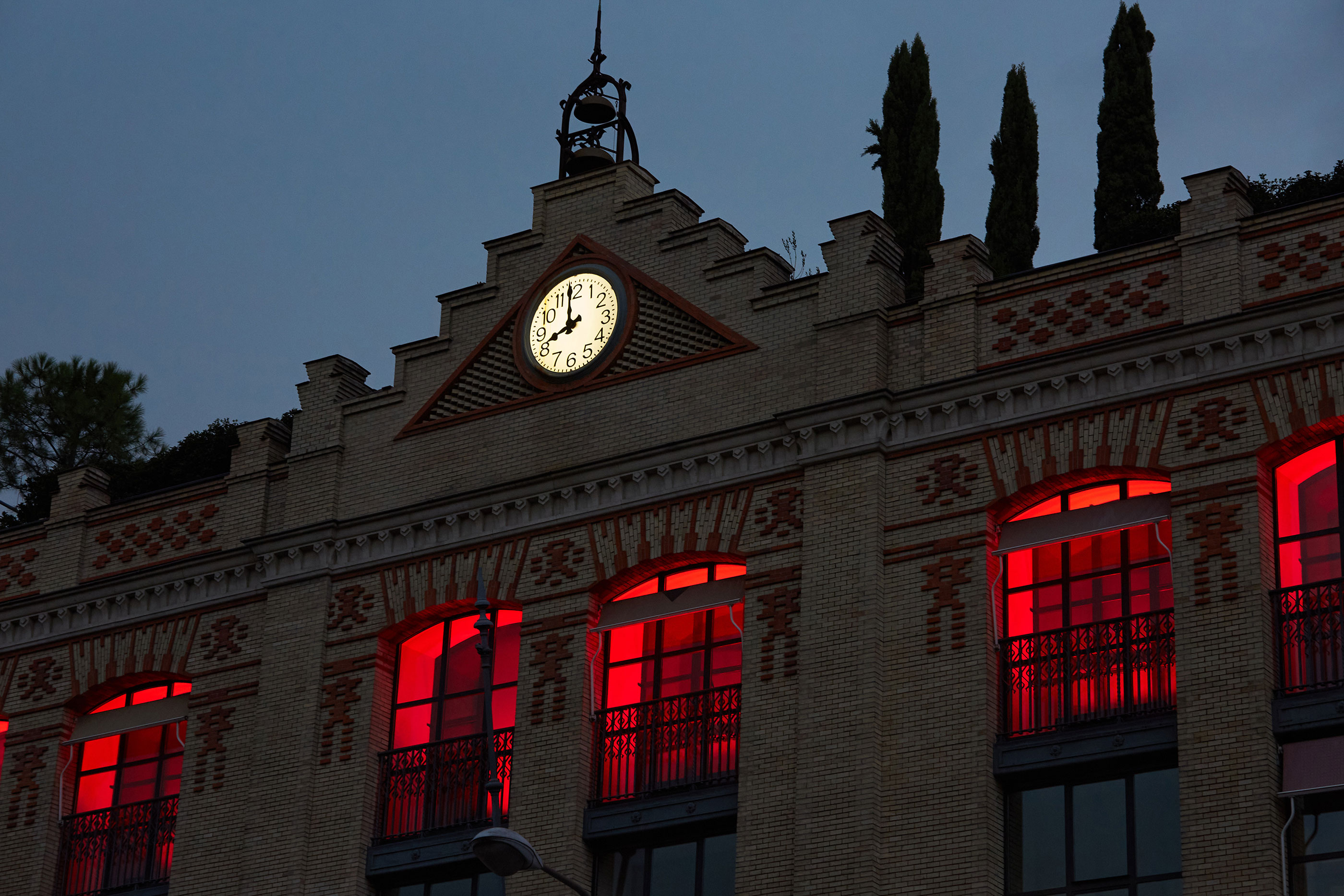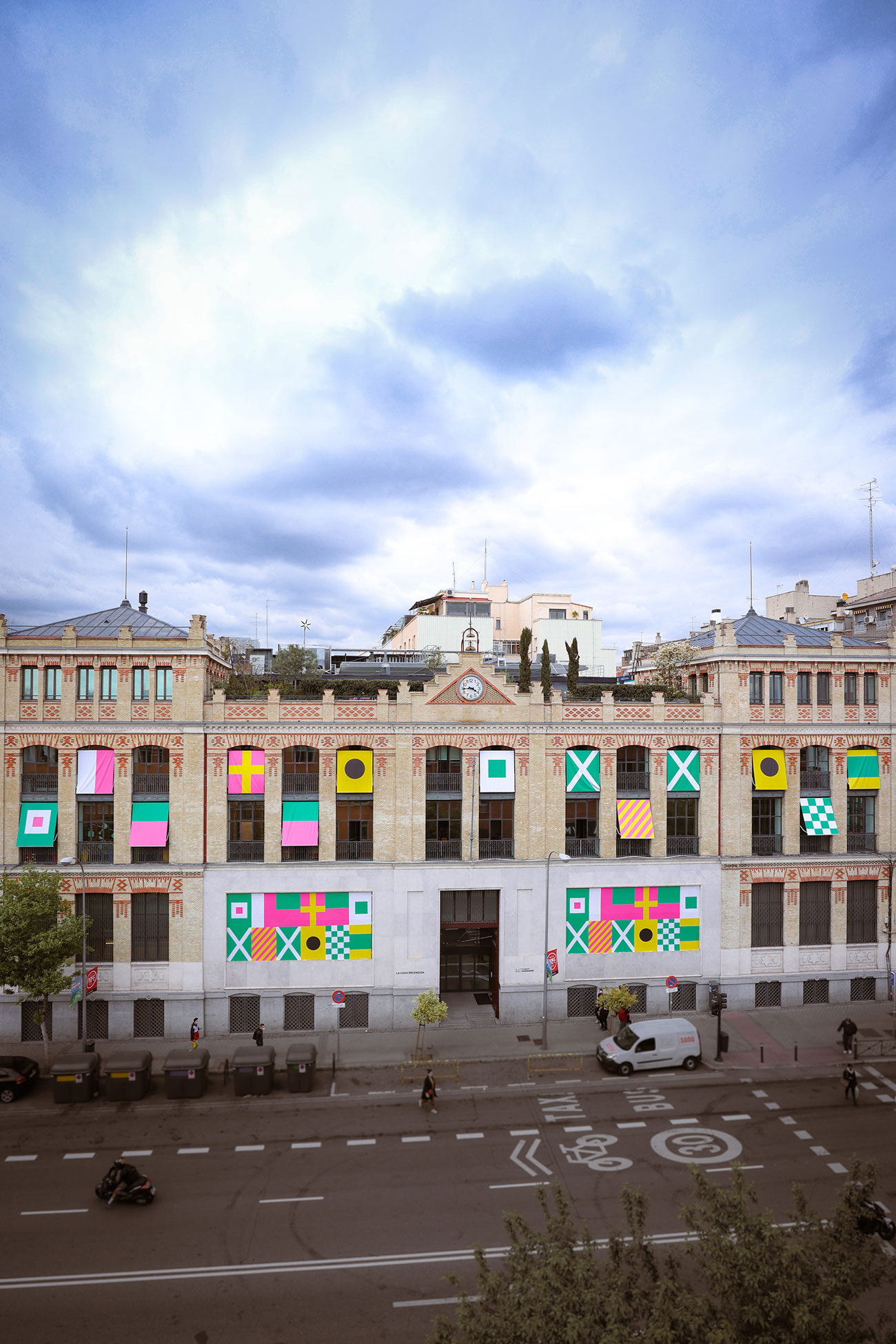Building and history
La Casa Encendida is housed in a large neo-Mudéjar-style building designed by architect Fernando Arbós y Tremantí. Construction began in 1911 and the building’s inauguration took place in 1913. It was formerly a Casa de Empeños Monte de Piedad [Charity Pawnshop] and a branch of the Caja de Ahorros de Madrid [Madrid Savings Bank]. Of great historical and artistic value, it is a listed building enjoying the highest degree of protection under current urban planning legislation.
As Madrid grew enormously from the 19th to the 20th century, the Board of Directors of the Caja de Ahorros y Monte de Piedad decided to create new branches of the institution, to make it easier to reach for people living in areas that were far from the centre of the city. Plots of land were acquired in two popular neighbourhoods: one of them at Ronda de Valencia, 2, the current site of La Casa Encendida. On 1 May 1911 the foundation stone was laid and on 1 May 1912 the building was opened. It was not officially inaugurated until 1 May 1913, and was to house the second branch of the Caja de Ahorros y Monte de Piedad de Madrid.
Throughout its more than a century of life, it has been used for various purposes, first serving as the offices of the Caja de Ahorros y Monte de Piedad de Madrid and later housing the institution’s archives and pawnshop warehouse, which is why for many years it was known as the Casa de Empeños [Pawnshop].
For the construction of the building, Arbós employed a neo-Mudéjar style, which was very common in Madrid architecture at the time. The style is apparent in the characteristic use of bricks of different colours, in the way the materials are put together, in the design of the door and window openings and in the conception of the edifice itself. The building has a rectangular ground plan arranged around a large central courtyard.
As for its inner structure, the building had three storeys plus the roof, with two towers and a basement storage area. The ground floor was reserved for office space only, while the main floor and the first floor housed a few offices and individual living quarters for managers and employees. The storerooms were large free-flowing floors with shelves and departments so that the pawned goods could be kept in perfect order. An important element of the building was the novelty, in architectural projects of the time, of employing materials like iron, which was used in the beams forming the floor slabs. The two side pavilions, currently named Torreón I and II [Towers I and II], which protrude in height and are connected by the roof, were intended as airing rooms for the clothes kept in the pawnshop. The building was also equipped with modern sanitary facilities, steam heating and electric lifts.
Refurbishment and New Use of the Building
The restoration of the Casa Encendida building was entrusted to Carlos Manzano and Associates, who carried out the renovation project in 1999 and completed it in 2002. The refurbishment project kept the essence of the building intact, respecting its historical and artistic value. Carlos Manzano had to reconvert the eclectic building designed by architect Fernando Arbós into a centre that was to be devoted to a variety of multidisciplinary, artistic and environmental activities aimed at a wide public.
The versatile nature of the building’s new purpose, which was to involve a series of different activities, allowed the site to be adapted to its new uses and needs with hardly any structural transformation, preserving the architectural and spatial values that make it such a unique example of 20th century Madrid architecture. The inside of the building was completely renovated, to eliminate architectural barriers and make the facilities accessible to all different groups of the population.
As for the interior layout and design, the courtyard remains the central axis of the building, as a place of passage but also as a live space in which multiple activities take place. La Casa Encendida has a usable surface area of approximately 6,500 square metres, distributed over four floors and a roof terrace, just like the Arbós building.
The basement houses the auditorium (with a capacity for 175 people), an audiovisual room (for 72 people) and two exhibition rooms (spaces E and D) with no natural lighting. The basement is connected to the main floor by a concrete staircase with an aluminium railing. Here we find the courtyard (with a surface area of approximately 300 square metres), the shop and three more exhibition rooms (spaces A, B and C), two of which are connected to each other.
Institutional history
La Casa Encendida was inaugurated on 3 December 2002, as a cultural and social centre belonging to Caja Madrid’s Obra Social [Social Foundation of the Madrid Savings Bank]. José Guirao, until then the director of the Museo Reina Sofía, was appointed head of the institution.
La Casa Encendida – which takes its name from the book-length poem of the same title by writer Luis Rosales – is a pioneering project in Spain, combining social and environmental concerns, cutting-edge multidisciplinary cultural programming, support for creation, and a vocation as a training and resource centre for creative endeavours.
In just a few years it became a reference institution in the Lavapiés neighbourhood, in Madrid and in the rest of the country, a successful model that has been and continues to be replicated in many different cities.
In 2010, along with other savings banks, Caja Madrid – and its Obra Social – merged into the Banco Financiero y de Ahorros [Financial and Savings Bank], later known as Bankia. All non-financial branches of the business – the Monte de Piedad, the Fundación Caja Madrid and the Obra Social – were left out of Bankia, including La Casa Encendida.
In 2012, these assets that did not belong to Bankia were renamed Fundación Especial Caja Madrid, which finally took on the definite name of Fundación Montemadrid in 2014.
The director of La Casa Encendida, José Guirao, was then appointed head of the Fundación Montemadrid, and Lucía Casani Fraile – formerly in charge of Culture – became the director of La Casa Encendida, a project that celebrated its twentieth anniversary in December 2022.

